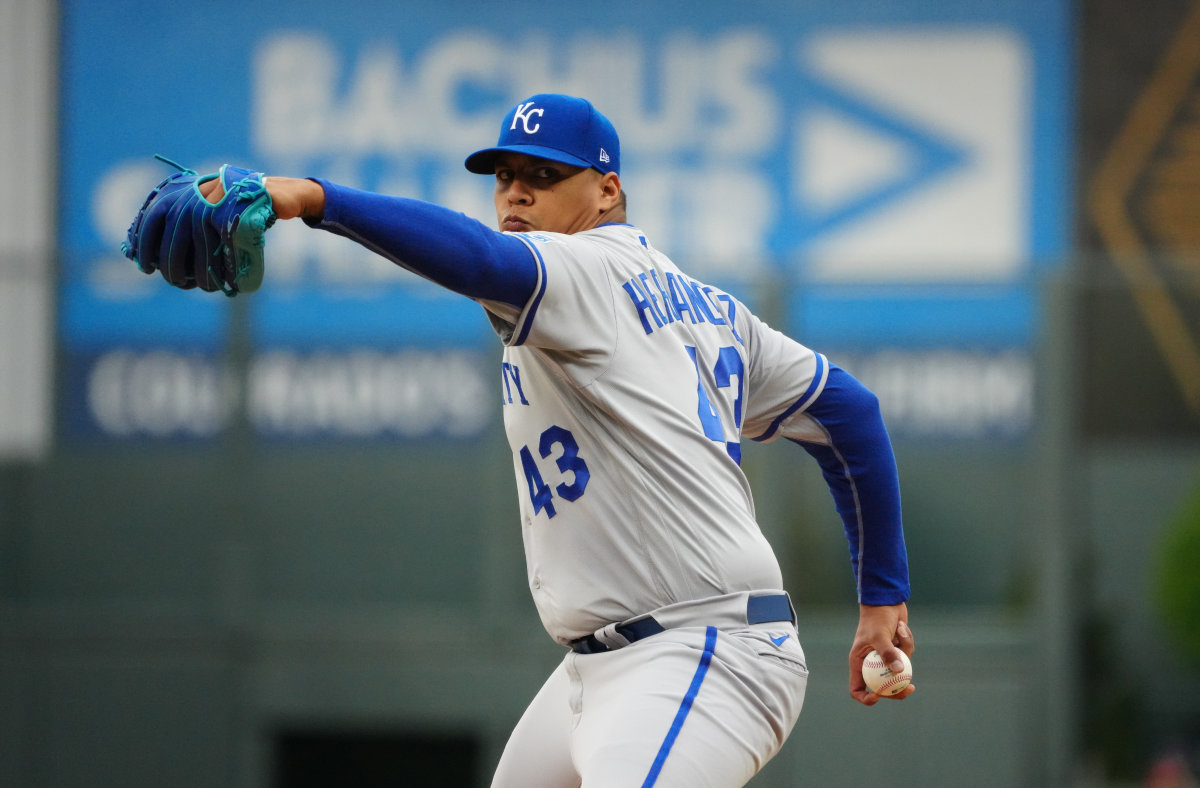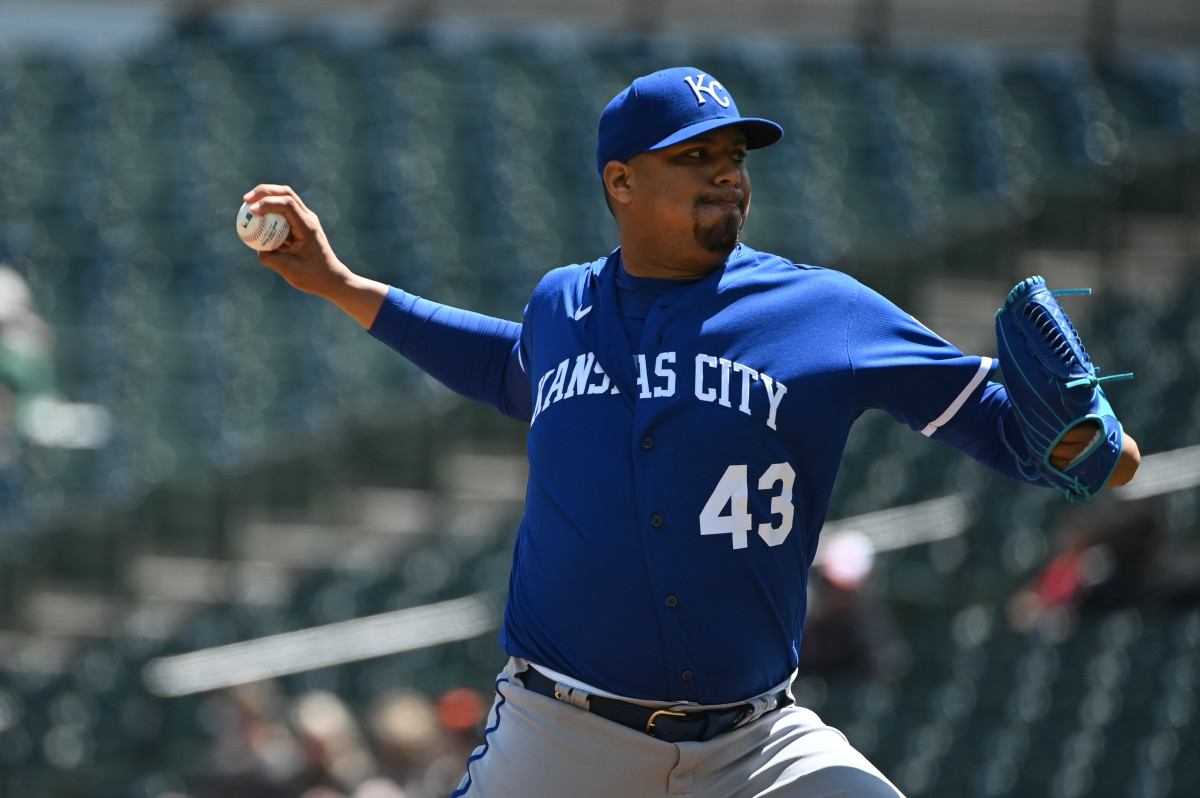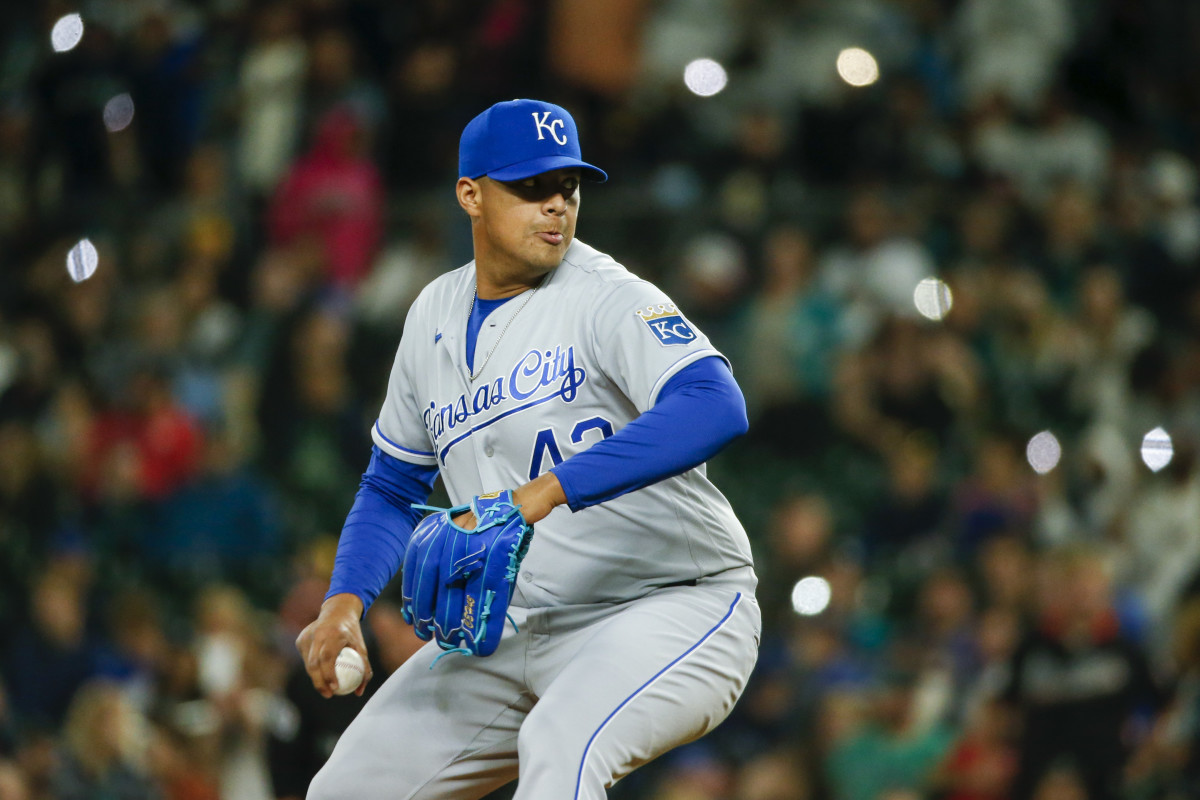The Royals Need to Pull Carlos Hernandez From the Rotation
"Those things will come back and get you. Putting guys on base is going to hurt."
The above quote is from Kansas City Royals manager Mike Matheny following Thursday night's 7-4 loss to the Chicago White Sox. Despite winning a pair of games, Kansas City lost the overall series to its American League Central division rivals. The club now has a 14-23 record on the year, and some tough decisions are long overdue.
Moving Carlos Hernandez off of his regularly scheduled starting spot is one of them.

Thursday night's outing was a microcosm of Hernandez's 2022 season, as he pitched three-plus innings and gave up five hits and three earned runs while striking out just three batters. More concerningly: Hernandez walked five and had little to no control over his offerings. His ERA sits at a ballooned 9.10, and he's a shell of the pitcher who burst onto the scene less than a year ago.
Across 85-2/3 innings of work last season, Hernandez was perhaps the Royals' best pitcher. He split time between the bullpen and the starting rotation, averaging 97.2 mph on his fastball and using his power arsenal to operate to the tune of a 3.68 ERA. He was confident in his pitch-mix and based everything on a fastball-curveball-slider trio that saw good success.
This year, Hernandez's fastball velocity is down to 95.2 mph. Its usage has dropped significantly, and the curveball is being relied upon much more often than it was last year. The slider, rather than being one of his best pitches (as it was in 2021), is just another offering holding him back. The production — or lack thereof — year-over-year is staggering.

Let's take a look at Hernandez's trinity of top pitches from the 2021 season:
- Four-seam fastball: 55.8% usage, .216 batting average, .364 SLG, 6.8 extension
- Curveball: 18.5% usage, .271 batting average .305 SLG, 6.7 extension
- Slider: 16.2% usage, .196 batting average, .275 SLG, 6.7 extension
And now, the 2022 season:
- Four-seam fastball: 44.8% usage, .463 batting average, .732 SLG, 6.6 extension
- Curveball: 25.7% usage, .234 batting average, .340 SLG, 6.6 extension
- Slider: 17.6% usage, .375 batting average, .500 SLG, 6.6 extension
Nothing is going right for Hernandez aside from the curveball somehow remaining a partially beneficial pitch (his spin rate is down year-over-year). The fastball that deceived opposing hitters is now getting tattooed, and the complementary slider isn't doing a ton better. Hernandez does go to a splitter 11.7% of the time, although batters are hitting .385 and slugging .692 against it — yet another failed pitch.
What does a team get when it has a starter who isn't getting enough extension, has seen his velocity worsen, doesn't have an effective fastball and walks far too many batters?
Someone who needs a change of scenery.

This isn't a trade argument, as the Royals clearly value Hernandez's contributions and his potential as a future member of the pitching staff. It is, however, an argument for the 25-year-old to either be relegated to the bullpen or sent down to Triple-A Omaha. Both present specific and distinct advantages.
Hernandez's relief experience does present the opportunity for him to simply be slotted back into that role. In 27-1/3 innings out of the bullpen last season, he posted a 3.95 ERA with 36 strikeouts to just 15 walks. Opponents hit just .220 off him and clubbed only two home runs. In a more condensed role, Hernandez can get back to what he does best and/or double down on what works for him once he finds it. It's an enticing proposition.
Demoting Hernandez could be a possible solution, too. Kansas City has done it with other young pitchers, and it's already seen some tangible benefits. Jackson Kowar seems to be improving, Kris Bubic is currently looking for answers and Brady Singer unleashed his changeup in full force upon returning from Omaha this week. Away from a big-league environment, Hernandez would be allowed to be in a relatively pressure-free situation with a staff that is currently doing a better job with development than the Royals' MLB staff is achieving. That option also makes sense.
At any rate, Kansas City needs to pick one or the other. Hernandez has flashed promise in the past, and it's early enough that he can still be allowed to work some kinks out without becoming a sunk cost. Those fixes require change, however, which will only come with either a demotion to the bullpen, a stint in Triple-A Omaha or an entire offseason of work. The Royals can act now to possibly help themselves — and Hernandez — later. It's time to do so.
